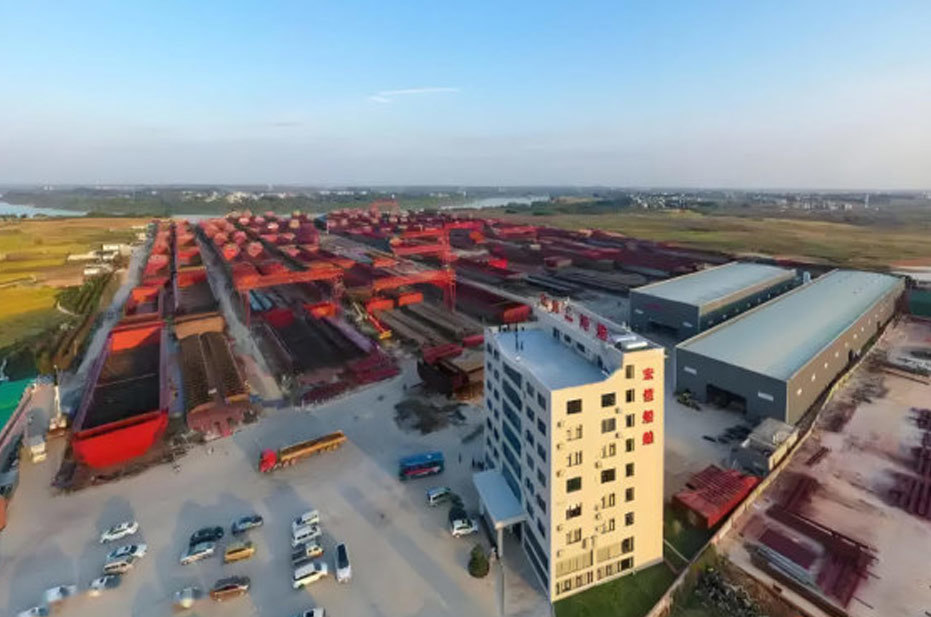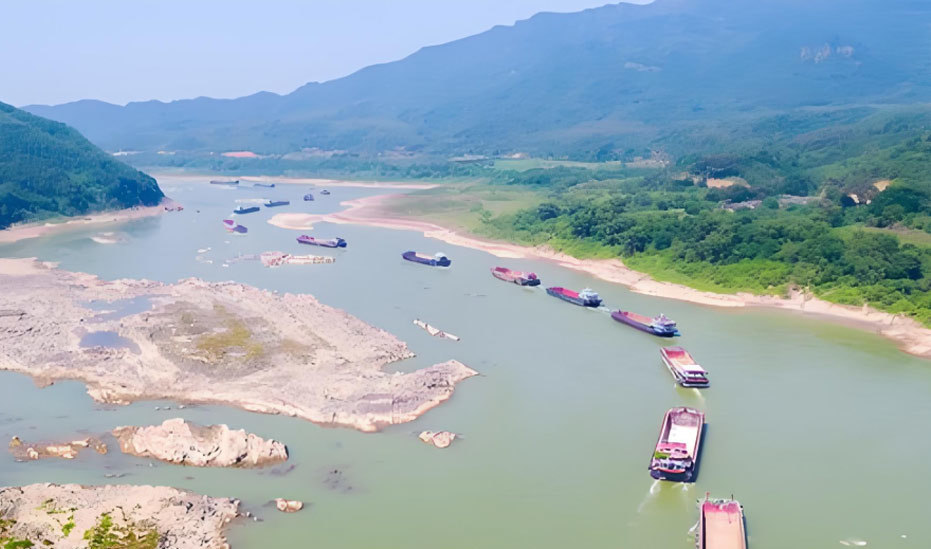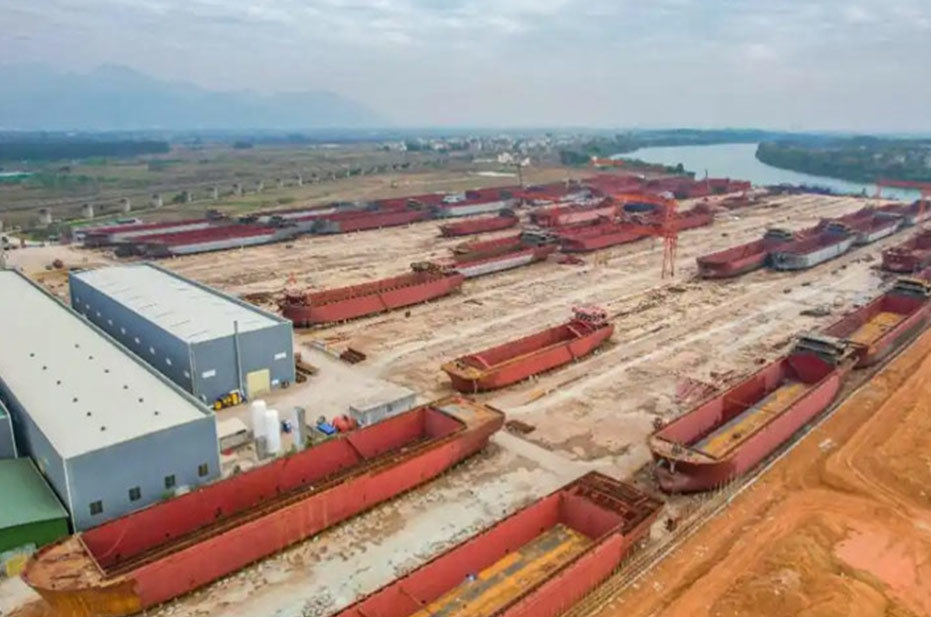15
2023
-
06
Aiming at new opportunities in the construction of the Pinglu Canal, the shipbuilding industry in Guiping, Guangxi is revitalizing.
Author:
The Grand Canal holds great business opportunities, which in turn give rise to large industries, and the shipbuilding industry in Guiping City, Guangxi, has risen accordingly. Now, on the "Golden Waterway" of the Xijiang River, 7 out of every 10 cargo ships are "Guiping manufactured."
The Grand Canal holds great business opportunities, which in turn give rise to large industries, and the shipbuilding industry in Guiping City, Guangxi is rising accordingly. Today, on the Xijiang "Golden Waterway", 7 out of every 10 cargo ships are "Guiping manufactured".
In recent years, leveraging its advantageous location at the confluence of the Qianjiang, Yujiang, and Xunjiang rivers, a long history of shipbuilding, and solid shipbuilding technology, the shipbuilding and repair industry in Guiping City, Guangxi is seizing new opportunities brought by the construction of the Pinglu Canal, with the vision of "building an advanced shipbuilding and repair industrial base with international competitiveness" and sailing against the wind.
Guiping City is located in the southeastern part of Guangxi, where the Qianjiang, Yujiang, and Xunjiang rivers converge. The "Guiping manufactured" machines driving ships in the inland waters have seen their carrying capacity increase from the initial 60 tons to 200 tons, 300 tons, and now to several thousand tons.
Since the 13th Five-Year Plan, the Guiping shipbuilding industry has rapidly risen, and the shipbuilding industry has become the leading industry in Guiping City. As a key shipbuilding base in Guangxi, Guiping City accounts for about 70% of the shipbuilding volume in the entire Guangxi region. As of now, there are 23 registered shipbuilding and repair enterprises in Guiping City, with more than 600 shipbuilding berths and over 10,000 employees, mainly constructing steel vessels with a carrying capacity of 3,000 to 6,000 tons. In 2022, the large-scale shipbuilding enterprises in Guiping City achieved an output value of 5.452 billion yuan, completing 469 ships.
Guiping Hongxin Shipbuilding Co., Ltd. is the largest shipbuilding enterprise in Guiping City. The company is located along the river from Liulan Village to Mianchong Village in Mengxui Town, Guiping City, with ships under construction spread across thousands of acres of land. From the top of the company’s office building, workers can be seen distributed across the shipbuilding berths, methodically assembling ships of various specifications.

The picture shows the shipbuilding operation site of Guiping Hongxin Shipbuilding Company.
Yang Guang, assistant to the chairman of Hongxin Shipbuilding Company, introduced that in 2022, the company built more than 200 ships, with an output value of 2.5 billion yuan. "Since April of this year, the company has been receiving continuous shipbuilding and repair orders. In addition, we have also obtained CCS certification for full-channel navigation." Yang Guang stated that the emergence of favorable news such as the commencement of construction of the Pinglu Canal has revitalized the shipbuilding industry in Guiping City.
It is understood that the Pinglu Canal, as a landmark project to accelerate the construction of a strong transportation country and a key project of the new western land-sea corridor, officially commenced construction on May 23. The Pinglu Canal connects the Xijiang shipping trunk line with the Beibu Gulf sea area, and once completed, it will open a major river-sea intermodal transport channel from the mainstream of the Xijiang River to the south into the sea in the southwestern region of China.

The picture shows a continuous flow of ships passing through the Xijiang Golden Waterway.
Once the Pinglu Canal is completed, it will achieve direct connectivity between Guangxi's 5,873 kilometers of inland waterway network, the waterways in parts of Yunnan and Guizhou, and marine transportation. At that time, goods from upstream areas can directly reach the sea through the Pinglu Canal from the Beibu Gulf, greatly releasing shipping advantages and potential, effectively solving the problem of poor shipping on the Xijiang.
Striving for maritime strength, "Guiping manufacturing" is focusing on new opportunities to seek major breakthroughs. In recent years, Guiping City has continuously accelerated the promotion of industry transformation and upgrading, focusing on building a shipbuilding and repair industrial system with excellent industrial structure, strong innovation capability, and good quality and efficiency, to support high-quality industrial development. Under the guidance of government departments, the shipbuilding and repair industry in Guiping City is continuously phasing out backward production capacity, guiding the previous "low", "scattered", and "chaotic" disorderly development towards a direction of scale and intensification.

The picture shows part of the Xijiang (Guiping) Modern Shipbuilding Industrial Park that has been put into use.
The Xijiang (Guiping) Modern Shipbuilding Industrial Park, located in Dawan Town and Mengxui Town in Guiping City, is built according to the Class A industrial park standards of the autonomous region, covering a total area of 4,745 acres, with a planned total investment of 8 billion yuan, including functions such as shipbuilding, ship inspection, ship trading, warehousing logistics, technology research and development, and technology training. Once the project is completed, it is expected to achieve an annual output value of 6 billion yuan and tax revenue of over 1 billion yuan.
The Xijiang (Guiping) Modern Shipbuilding Industrial Park aims to cultivate and develop leading enterprises, using the enhancement of industrial basic capabilities and modernization of the industrial chain as a breakthrough, focusing on the integration and enhancement of production factors, to build an advanced shipbuilding and repair industrial base with international competitiveness, becoming the leader of the shipbuilding and repair industry in the southwestern region.
| Related Information


